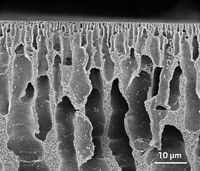Advertisement
Grab your lab coat. Let's get started
Welcome!
Welcome!
Create an account below to get 6 C&EN articles per month, receive newsletters and more - all free.
It seems this is your first time logging in online. Please enter the following information to continue.
As an ACS member you automatically get access to this site. All we need is few more details to create your reading experience.
Not you? Sign in with a different account.
Not you? Sign in with a different account.
ERROR 1
ERROR 1
ERROR 2
ERROR 2
ERROR 2
ERROR 2
ERROR 2
Password and Confirm password must match.
If you have an ACS member number, please enter it here so we can link this account to your membership. (optional)
ERROR 2
ACS values your privacy. By submitting your information, you are gaining access to C&EN and subscribing to our weekly newsletter. We use the information you provide to make your reading experience better, and we will never sell your data to third party members.
Energy
Cleaning Up The Coal-To-Liquids Process
by Mitch Jacoby
September 15, 2008
| A version of this story appeared in
Volume 86, Issue 37

Fischer-Tropsch (FT) chemistry can be harnessed to turn coal into fuels. But the method produces roughly twice as much CO2 as petroleum-based processes, giving coal a bad rap, Charles E. Taylor explained at last month's American Chemical Society national meeting in Philadelphia.
Taylor, a director at the National Energy Technology Laboratory (NETL), in Pittsburgh, and colleagues are working to drastically reduce CO2 emission levels associated with the coal-to-liquids process. Their overall strategy sounds simple: combine coal and certain kinds of biomass, gasify the mixture, do FT chemistry, and capture and store the CO2. NETL and the Air Force have recently published a report outlining that strategy.
To help advance the coal/biomass-to-liquids (CBTL) technology, NETL is focusing on a number of fundamental problems, such as developing new robust metallic membranes for separating and purifying hydrogen from process-gas mixtures. In that area, NETL scientists recently found that coating Pd–Cu alloy membranes with Ni–Fe–Cr deposits sidesteps problems caused by small amounts of H2S in the gas mixtures. H2S, which is a common product of coal gasification, corrodes various types of alloy membranes and retards hydrogen permeation. "These deposits coat the membrane with a corrosion-resistant barrier that allows sulfur to sit on the membrane surface without impeding transport of hydrogen," Taylor told members at the Division of Petroleum Chemistry presentation.
In related work, NETL researchers have used computational methods to screen thousands of other alloy compositions for CBTL membranes and has whittled down the pool to some 12 materials that are now being tested experimentally, Taylor said.
NETL is also tackling a variety of other challenges, such as nanoengineering iron-based FT catalysts for modeling the CBTL process. The goal is to prepare catalyst particles that expose certain crystal faces that favor elementary steps in FT synthesis, such as dissociation and hydrogenation. The team has recently moved in that direction. Their work indicates that the crystal structure of iron particles can be varied widely by altering growth conditions and by choosing among gold, platinum, and other support materials.
"Cofeeding biomass can make coal carbon friendly," Taylor said, but taking advantage of that process requires finding solutions to fundamental problems. For now, research continues.





Join the conversation
Contact the reporter
Submit a Letter to the Editor for publication
Engage with us on Twitter